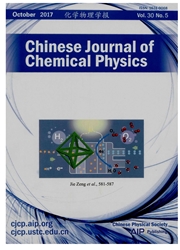

 中文摘要:
中文摘要:
形状控制证明了是定制双性人 2 为许多应用程序的 Se 3 nanostructures。这里,三不同双性人 2 Se 3 nanostructures,即,螺线类型 nanoplates,光滑的 nanoplates,和树枝状的 nanostructures,被在合成系统操作过度饱和水平准备。这机制研究显示在低过度饱和,那在生长能引起在双性人 2 Se 3 粒子连续地被增加,导致螺线类型 nanoplates 的形成。在中间的过度饱和,非结晶的双性人 2 Se 3 粒子和随后的再结晶导致了光滑的 nanoplates 的形成。而且在高过度饱和,多晶的双性人 2 开始形成的 Se 3 核心,在哪个双性人 2 Se 3 发生了。这个工作不仅推进我们生长机制的理解而且提供一条新途径控制双性人 2 Se 3 nanostructures。
 英文摘要:
英文摘要:
Shape control has proven to be a powerful and versatile means of tailoring the properties of Bi2Se3 nanostructures for a wide variety of applications. Here, three different Bi2Se3 nanostructures, i.e., spiral-type nanoplates, smooth nanoplates, and dendritic nanostructures, were prepared by manipulating the supersaturation level in the synthetic system. This mechanism study indicated that, at low supersaturation, defects in the crystal growth could cause a step edge upon which Bi2Se3 particles were added continuously, leading to the formation of spiral-type nanoplates. At intermediate supersaturation, the aggregation of amorphous Bi2Se3 particles and subsequent recrystallization resulted in the formation of smooth nanoplates. Furthermore, at high supersaturation, polycrystalline Bi2Se3 cores formed initially, on which anisotropic growth of Bi2Se3 occurred. This work not only advances our understanding of the growth mechanism but also offers a new approach to control the morphology of Bi2Se3 nanostructures.
 同期刊论文项目
同期刊论文项目
 同项目期刊论文
同项目期刊论文
 Octahedral Pd@Pt1.8Ni core-shell nanocrystalswith ultrathin PtNi alloy shells as active catalysts fo
Octahedral Pd@Pt1.8Ni core-shell nanocrystalswith ultrathin PtNi alloy shells as active catalysts fo A new nanobiocatalytic system based on allosteric effect with dramatically enhanced enzymatic perfor
A new nanobiocatalytic system based on allosteric effect with dramatically enhanced enzymatic perfor Oxidative etching and its role in manipulating the nucleation and growth of noble-metal nanocrystals
Oxidative etching and its role in manipulating the nucleation and growth of noble-metal nanocrystals 期刊信息
期刊信息
